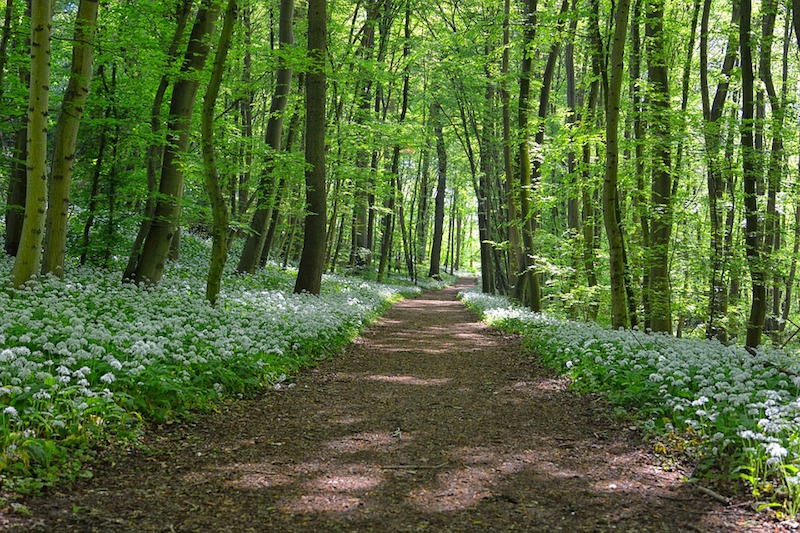Intuition tells us that views of and exposure to the outdoors are good for the human mental state. In recent years, a handful of scientific studies—most notably Heschong Mahone’s daylighting in schools research—has provided AEC teams with important data to back up design decisions around daylighting, views, biophilic design, and a stronger connection with nature.
As a result of these early studies—and our improved understanding of the human mind—building owners and real estate developers have invested considerably to inject nature into their building projects. From hospitals to schools to office buildings, nature has become big business in new construction and renovation work. Landscaped terraces, rooftop gardens, nature meditation rooms, living walls, healing gardens, on-site parks, walking paths, therapy gardens—these are de rigueur in the modern built environment.
But how much “nature” is needed on projects? Is more always better when it comes to these features and spaces? And what types of nature-inspired design elements are most effective? Considering that these components often require special maintenance procedures and staff and ongoing operational investment, it’s important to explore these questions.
New research from King’s College London, published in the peer-review journal BioScience, sheds some light on the subject. It also provides a method by which AEC teams can assess the effectiveness of nature-inspired features.
Using a custom smartphone app, Urban Mind, the research team monitored the momentary mental well-being of 108 city dwellers, who completed 3,013 “ecological momentary assessments” during a one-week period. Each participant was asked to complete seven assessments per day. Questions included: Are you indoors or outdoors? Can you see trees? Can you see the sky? Can you hear birds singing?
Among the findings: There is a “significant” lagging effect of nature on momentary mental well-being. That is, nature has a lasting positive effect on the mind.
How long exactly? It depends. The data shows, for example, that seeing trees and seeing the sky during an assessment had a statistically significant effect on momentary well-being in the next subsequent assessment, which took place an average of two hours and 25 minutes later. For those “feeling in contact with nature,” the positive mental well-being spike lingered as long as four hours and 50 minutes. Same for “hearing birds singing.” The lingering benefit of “seeing or hearing water” was not as statistically significant.
Obviously, more research is needed in this area, but the study’s basic conclusions could help AEC teams make better-informed decisions about nature-inspired design. For instance, can building design features amplify or extend this lagging positive effect? Is a three-acre healing garden overkill when one acre will do? Do we need more birds chirping inside buildings (please, no!)?
Related Stories
Mass Timber | May 1, 2023
SOM designs mass timber climate solutions center on Governors Island, anchored by Stony Brook University
Governors Island in New York Harbor will be home to a new climate-solutions center called The New York Climate Exchange. Designed by Skidmore, Owings & Merrill (SOM), The Exchange will develop and deploy solutions to the global climate crisis while also acting as a regional hub for the green economy. New York’s Stony Brook University will serve as the center’s anchor institution.
Concrete Technology | Apr 24, 2023
A housing complex outside Paris is touted as the world’s first fully recycled concrete building
Outside Paris, Holcim, a Swiss-based provider of innovative and sustainable building solutions, and Seqens, a social housing provider in France, are partnering to build Recygénie—a 220-unit housing complex, including 70 social housing units. Holcim is calling the project the world’s first fully recycled concrete building.
Green | Apr 21, 2023
Boston to adopt stringent climate-friendly building code
Boston will soon adopt a new stringent green state building code that aims to significantly reduce carbon emissions in new construction and major renovations.
Green | Apr 21, 2023
Top 10 green building projects for 2023
The Harvard University Science and Engineering Complex in Boston and the Westwood Hills Nature Center in St. Louis are among the AIA COTE Top Ten Awards honorees for 2023.
Green | Apr 18, 2023
USGBC and IWBI unveil streamlined certification pathway for LEED and WELL green building programs
The U.S. Green Building Council, Green Business Certification Inc., and the International WELL Building Institute released a streamlined process for projects pursuing certifications for the LEED green building rating system and the WELL Building Standard. The new protocol simplifies documentation for projects that are pursuing both certifications at the same time or that have already earned one certification and are looking to add the other.
K-12 Schools | Apr 18, 2023
ASHRAE offers indoor air quality guide for schools
The American Society of Heating, Refrigerating and Air-Conditioning Engineers (ASHRAE) has released a guide for educators, administrators, and school districts on indoor air quality. The guide can be used as a tool to discuss options to improve indoor air quality based on existing HVAC equipment, regional objectives, and available funding.
Mixed-Use | Apr 7, 2023
New Nashville mixed-use high-rise features curved, stepped massing and wellness focus
Construction recently started on 5 City Blvd, a new 15-story office and mixed-use building in Nashville, Tenn. Located on a uniquely shaped site, the 730,000-sf structure features curved, stepped massing and amenities with a focus on wellness.
Cladding and Facade Systems | Apr 5, 2023
Façade innovation: University of Stuttgart tests a ‘saturated building skin’ for lessening heat islands
HydroSKIN is a façade made with textiles that stores rainwater and uses it later to cool hot building exteriors. The façade innovation consists of an external, multilayered 3D textile that acts as a water collector and evaporator.
Sustainability | Apr 4, 2023
ASHRAE releases Building Performance Standards Guide
Building Performance Standards (BPS): A Technical Resource Guide was created to provide a technical basis for policymakers, building owners, practitioners and other stakeholders interested in developing and implementing a BPS policy. The publication is the first in a series of seven guidebooks by ASHRAE on building decarbonization.
Sustainability | Apr 4, 2023
NIBS report: Decarbonizing the U.S. building sector will require massive, coordinated effort
Decarbonizing the building sector will require a massive, strategic, and coordinated effort by the public and private sectors, according to a report by the National Institute of Building Sciences (NIBS).

















